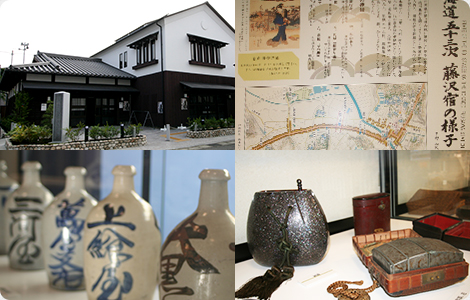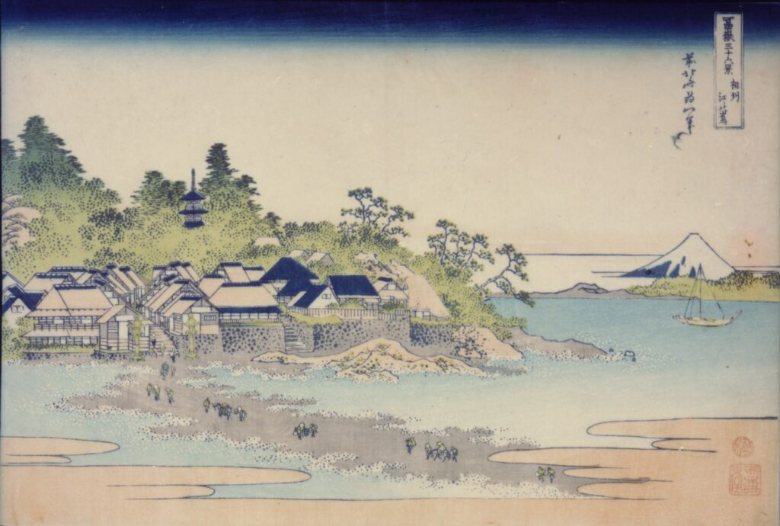


Fujisawa began life as the temple town of Yugyo-ji Temple, which was built by the Fourth Holy Priest Donkai during the Kamakura Period in 1325. From the Edo Period, Fujisawa was designated as the 6th of 53 “Posting Stations” located along the Tokaido Road, which connected Nihonbashi in Edo (present day Tokyo) to Kyoto. Due to this, Fujisawa developed not only as a temple town, but as a “Post Town”.
From the mid-Edo Period onwards, Enoshima became a popular pilgrimage destination for the general public. Being at the starting point of the road to Enoshima, Fujisawa prospered from both traffic on the Tokaido Road, and visitors heading to Enoshima Shrine. The atmosphere of the time is depicted in the Japanese woodblock print “Fifty-Three Stages of the Tokaido, Fujisawa”, by Hiroshige Utagawa. Even today, the long and narrow street layout centered on the Tokaido Road still exists, together with buildings reflecting the period. Visitors to the area can get a flavor of what it was like to visit Fujisawa at that time.
Post Towns
The Edo Shogunate created a series of “Posting Stations” along roads where travelers could stop and rest. Those towns which grew and developed around their posting station became known as “Post Towns”. Not only a place for tired travelers to rest, each posting station acted as a distribution center for official government letters and goods, delivering them to their destination quickly by horse.
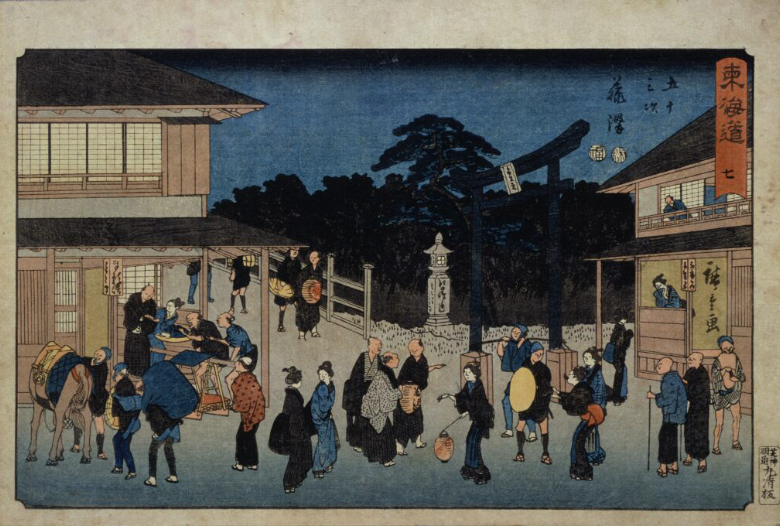
Temple Towns
These were towns built around some of the most prominent or influential temples and shrines. Catering for the flow of pilgrims to these sacred sites, merchant’s shops and inns were built, creating an early form of urbanization.
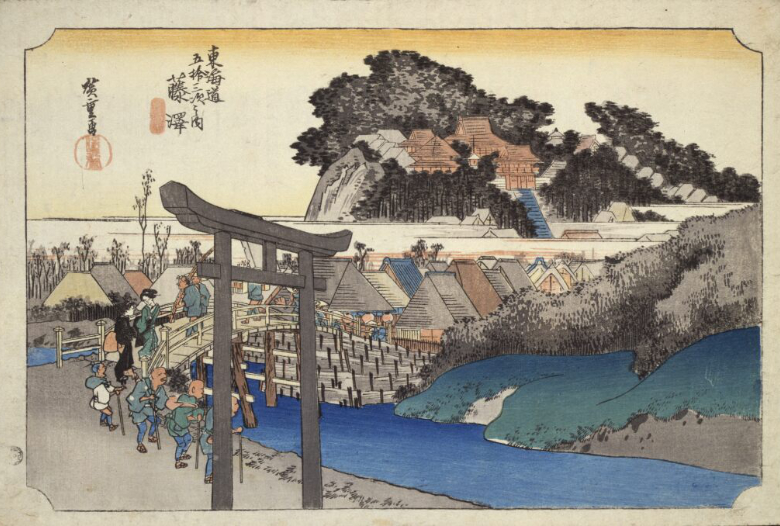
53 Stages of the Tokaido Road
At around 492 kilometers in length, the Tokaido Road connected Nihonbashi in Edo (present day Tokyo) and Sanjo Ohashi in Kyoto.
The road was consolidated in the Edo Period by the Shogun Tokugawa Ieyasu. In order to facilitate more rapid communication between his castle in Edo and the Emperor and Imperial Court in Kyoto, Ieyasu sanctioned the creation of 53 posting stations along the Tokaido Road in 1601. These posting stations became known as the 53 stages of the Tokaido Road.
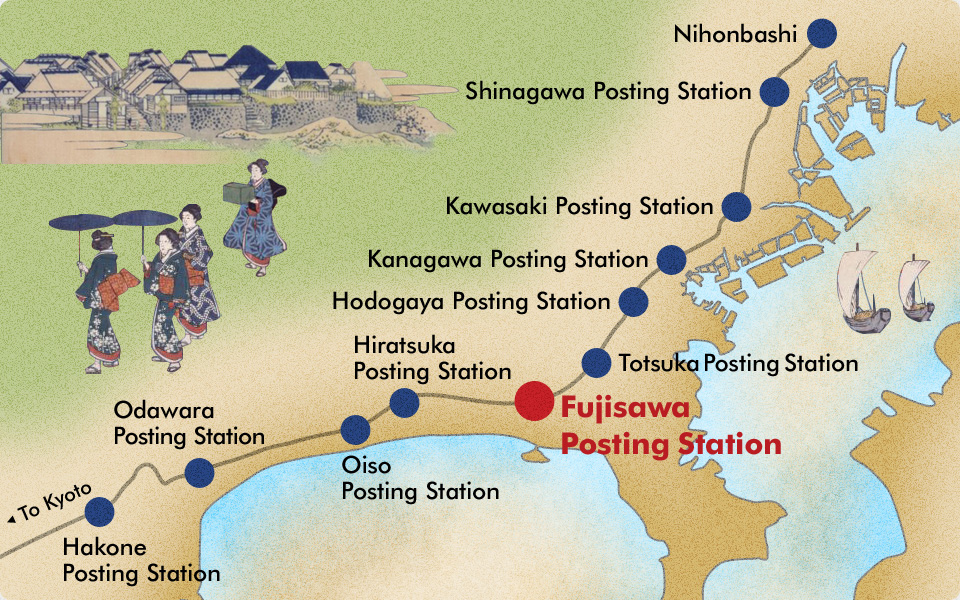
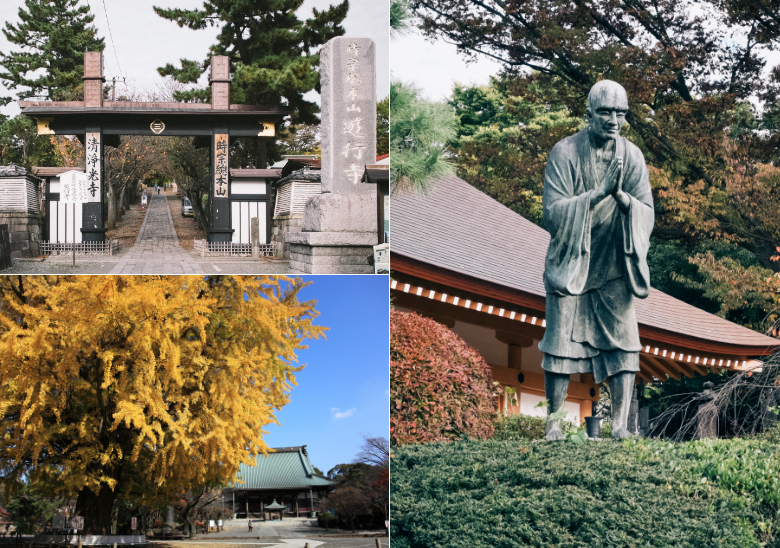
Yugyo-ji Temple
Fujisawa began life as the temple town of Yugyo-ji Temple, and was called “Totakusan”. The town eventually became a post town on the Tokaido Road, and has since been known as Fujisawa.
Yugoy-ji was founded by Saint Ippen, and was the head temple of the Jishu Buddhism Sect. Ippen gave up all of his possessions and travelled the country (*1), bringing great hope to the poor and people suffering and in distress. The people who saw Ippen felt great joy rising up from the bottom of their hearts, and they were soon filled with renewed spiritual vitality. This soon become expressed through Odori Nembutsu (Dancing Prayer) (*2), and the circle of people rejoicing in this grew and grew. This dancing prayer is thought to be the source of what is today known as the Bon Festival Dance.
The official name of Yugyo-ji Temple is “Totakusan Muryokoin Shojoko-ji”. The temple is a 15-minute walk from Fujisawa Station.
During spring, “Irohazaka Hill”, which is the cherry tree lined road leading to the temple, creates a beautiful tunnel of cherry blossoms. In autumn, the 21-meter tall Ginkgo tree, which is a designated natural monument, is also spectacular.
1. Ippen travelled the country on a religious mission, training and spreading word of his faith.
2. Experiencing a state of near religious exultation through dancing and chanting.
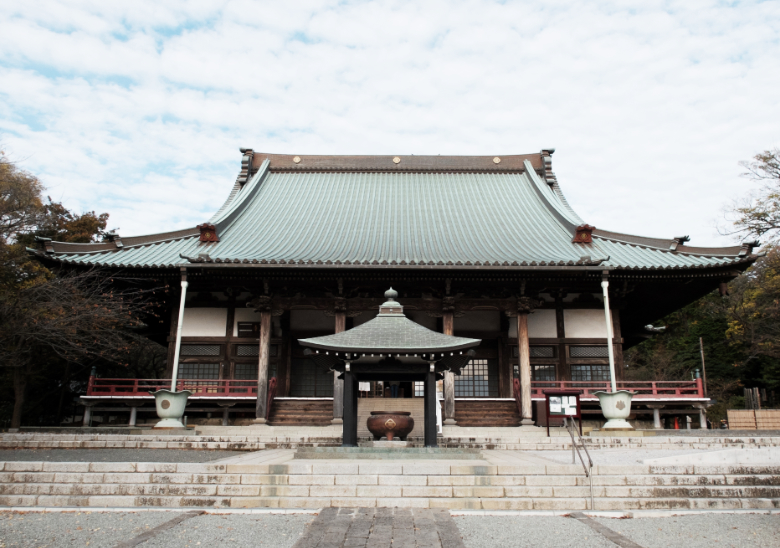
Fujisawa Shuku Koryukan (Fujisawa Post Station Exchange Center)
Post Town Fujisawa was the 6th posting station of the fifty-three stages along the Tokaido Road, and an area that once prospered as the town surrounding Yugyo-ji Temple. Today, Fujisawa Post Station Exchange Center lets visitors experience this wealth of history and culture first-hand.
Items from the period together with a diorama are on display, as is a 3D recreation of Post Town era Fujisawa.
The Exchange Center is a 15-minute walk from JR Fujisawa Station (North Exit), and is near to Yugyo-ji Temple’s black gate which stands at the foot of Irohazaka Hill.
- 【Opening Hours】
- April through September – 9:00 to 18:00
October through March – 9:00 to 17:00
- 【Closed】
- Monday (closed the following day when national holiday falls on Monday)
Year End / New Year – December 27th through January 1st
Fujisawa Shuku Koryukan (Fujisawa Post Station Exchange Center) official website (Japanese only)
